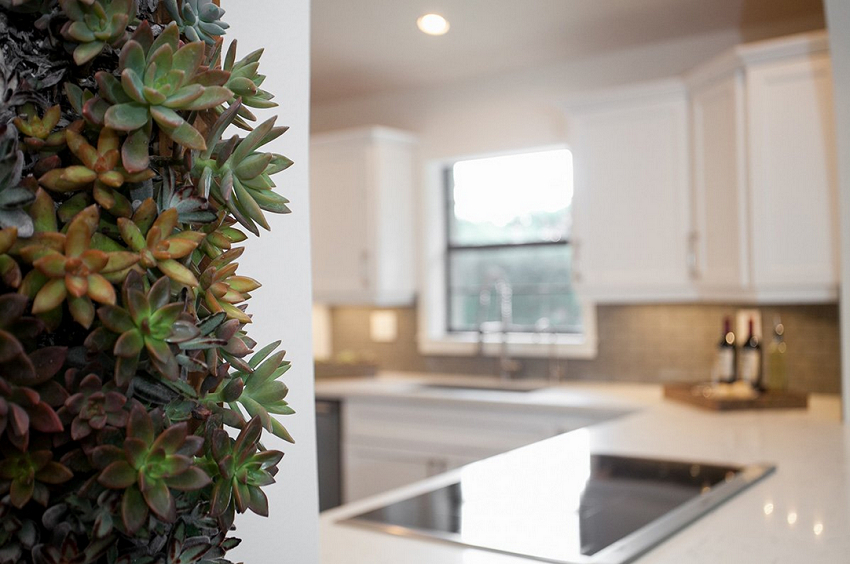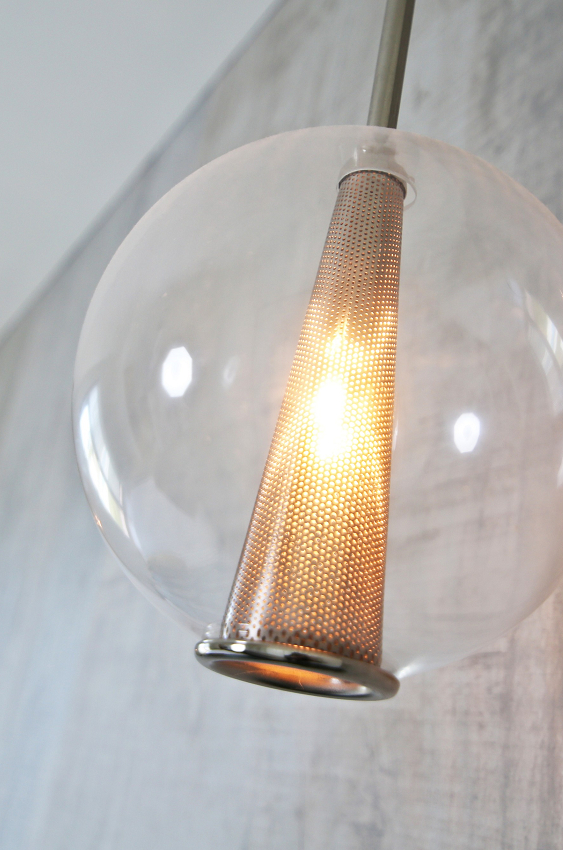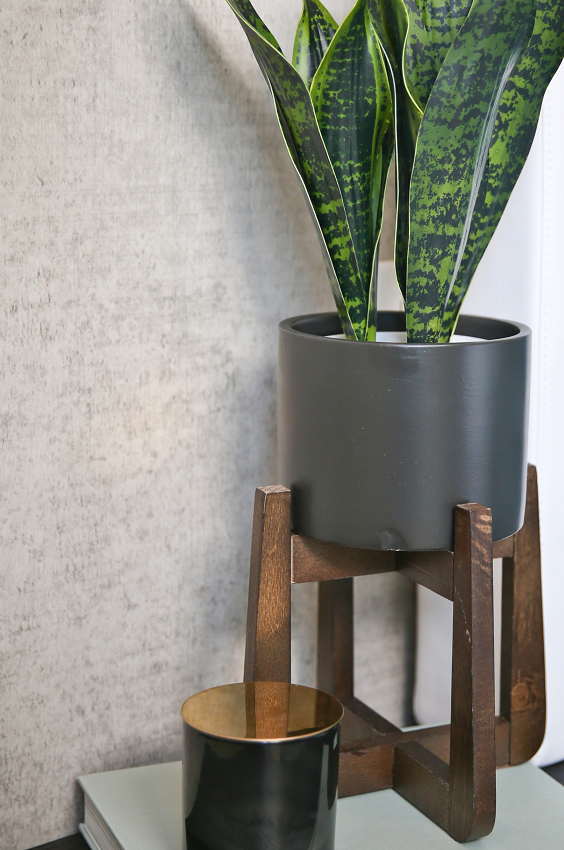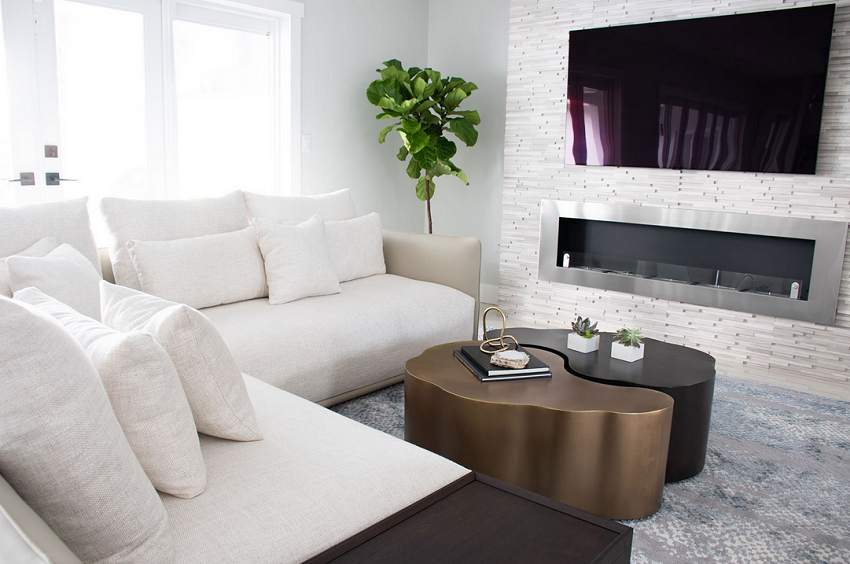Many tend to think of the biophilic design movement as “forest bathing” (thank you, Christina McManaway for that hilariously awesome term). But it isn’t just about incorporating plants into your environment.
Biophilic design goes beyond “looks” and into the deep-seeded biological needs of the human psyche. It helps us feel and live better than ever! But I’m getting a little ahead of myself here… let’s start at the beginning, shall we?

What is biophilic design?
Biophilia is the focus on life and lifelike processes. “Wait, what the heck does that mean?!” Simply put, it means that humans have a biological and psychological need to be a part of nature. (We are part of the animal kingdom, after all!)
Biophilic design is… you nailed it!… designing with those fundamental, biological needs in mind. It’s what leads to feeling good (and happy and healthy) in a space. If your walls look tired and your living room is a bore, guess what? You’re probably going to feel tired (very different from being relaxed) and wholly uninspired. We can do better, and biophilic design can help!
Now, you may have seen a glimpse of this design style before. Ever seen a “living wall?” A wall, like the photo above, that is basically filled with greenery? Or buildings that have trees and vines flowing off every floor? (There are famous ones in Singapore, Milan…)
But a biophilic space isn’t just one with plants in it. The biophilic design approach includes the items in our space, the air we breathe, the lighting that bounces off our rods and cones, and even takes into consideration the circadian rhythm of our internal clock!
But what I love most is that incorporating biophilic design features into a home is taking the human psyche, as well as our physical and mental well-being, into consideration.
Intrigued? Come take a look at 5 ways biophilic design can change your space and the way you live.

1. Lay of the Land
Knowing the property on the outside is key to designing a healthy space inside. Surveying the land, locating the trees, determining which windows see the sun rise and set, and understanding the shade patterns of a property all contribute to helping us design for your best health.
I know, what an insane level of detail, right??
But without this in-depth knowledge of the outdoor space, the indoor space suffers. Since biophilic design is all about being one with nature and embracing that aspect of ourselves, it only makes sense that any well-designed home should help the outdoors flow seamlessly into your life indoors.

2. Materials Matter
The materials in your home, from the walls and flooring to the furniture and finishing touches, matter tremendously — physically and mentally.
Physically, some materials really do impact our short- and long-term health. We have all heard that synthetic products in the home aren’t good for us. But why? Well, let me tell ya...things like polyvinyl (think PVC) and polyurethane are actually toxic. The off-gassing from those materials (called Volatile Organic Compounds, VOCs) bioaccumulates and can cause serious issues, like the dreaded C-word. No, thank you.
By choosing environmentally-friendly elements (wood, stone, natural fibers, etc.), you eliminate off-gassing and sublimating in your home, therefore creating a healthier place to live.
Mentally, different materials play a role in how we feel every day, too. You probs didn’t know that metal is considered stimulating, whereas natural products, like wood, are mentally calming… fascinating, isn’t it?! That’s not to say that one is better than another — simply that YOU get to decide how you want to feel in each space in your home.

3. Life-like Lighting
Natural lighting requires so much more than windows in a home. Obviously windows and sunlight are important, but so are the bulbs you choose to illuminate your home.
We all wish the days were longer and the sun shone for more hours in the winter months, but since we can’t change the universe’s natural rhythms, we can change the type of light in our homes.
We encourage you to switch out your light bulbs from fluorescent or yellow to daylight bulbs. No, not all of them, but a strategic few will drastically uplift your space when you need it. And let’s be honest, we could all use some uplifting these days!

4. Going Green
I know, I know...we were poking fun at house plants a hot second ago, but they really are a crucial part of biophilic design. Not because you should feel like you’re living in your own little jungle (although you certainly could!), but because they produce oxygen. I don’t need to tell you how important oxygen is, do I?!
Greenery in your space contributes significantly to your physical well-being, naturally purifying the environment, oxygenating your home, and providing clean, fresh air for your lungs every single day. Breathe in, breathe out...ahhh!

5. Advanced Automation
This one may sound a little funny...but hear me out.. I’m not talking about adding frivolous technology or spending more time on the computer. I mean automating your home to function within the natural course of daylight and your body’s individual circadian rhythms.
This might mean automating your blinds to open and close with the sunlight, or in sync with your sleep-wake cycle. Or this might mean putting your overhead lights on an automated dimmer to assist with waking and winding down each day.
Simple automation keeps your home in line with your body’s patterns to facilitate health, happiness, and good sleep. You will be truly amazed how even small changes, like better sleep, can add up to big impact in the way you feel every day — inside your home and out. Hear, hear!

6. Awe-Inspiring Artwork
While some might not see artwork's connection to nature, I see it as essential to the ultimate biophilic design. Wall art that reminds you of being in nature plays a substantial role in the psychology of your space. It can also add depth to a wall, creating a sense of open space, possibility, and the ability to relax and breathe.
It’s true that nature means something different to everyone, so there is no one-size-fits-all recommendation for the subject matter in your biophilic artwork. Whether these are photographs of crashing waves in the vast ocean, paintings of a rocky mountain landscape, or drawings of a densely-wooded forest, the important thing is that the images you surround yourself with evoke memories of nature for YOU.
My suggestion is to think of your favorite place in the world, and let that inspire you. Is it a special beach near Miami? A more jungle-esque coast, like Costa Rica? Or a favorite mountain you visited back when the world made sense?
Bring those images (and memories) into your home, and I guarantee you won’t just see, you’ll feel, the difference.
How can you create a biophilic home?
If you're curious to learn more or add biophilic design to your home, there are dozens, if not hundreds, of resources out there to further educate yourself on the wonderful philosophy that is biophilic design (WELLand Living Future, to name a few).
Or, if you're totally on board and think "LET'S GO, DARLA, I NEED SUNSHINE AND OXYGEN!" give us a friendly call. We'd be happy to help you create a space that gives you exactly what you need to feel and live at your best. :)
Xo,
Darla
P.S. Furnishing a home? Don’t forget to download our guide to budgeting your home furnishings below. And yes, of course this guide applies to clean, healthy (non-gassing) furniture too. ;)







